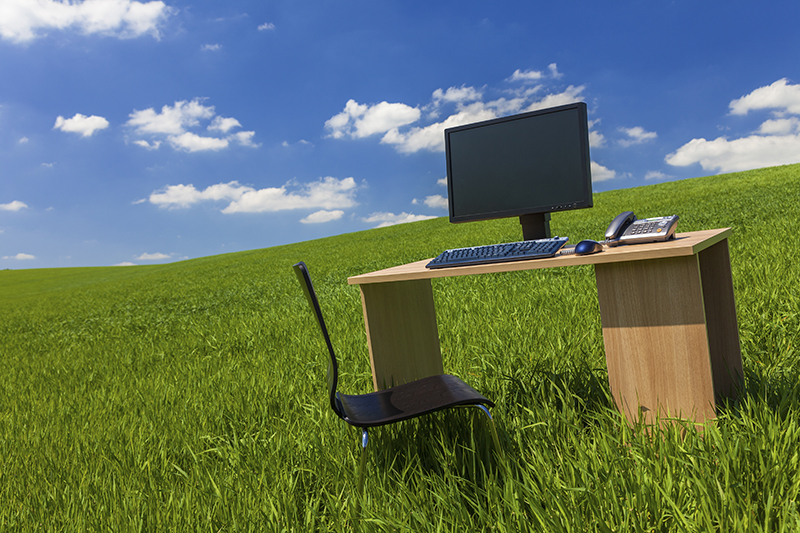An environmentally-friendly workplace isn’t just better for the planet but also your employees and – most importantly – your bottom line. It also has the added benefit of reducing risks and preventing losses.
So as you make your way through your spring cleaning checklist this month, include these tips to make your office green. Here are seven easy, cost-effective methods to help your office go green:
- Give CFLs the green light: Switching from standard, incandescent bulbs to compact fluorescent light bulbs (CFLs) will noticeably decrease your office’s energy consumption. Yes, they initially cost more than standard bulbs but you’ll end up saving in the long run as they last much longer. Just make sure they’re properly disposed of afterwards.
- Turn off electrical equipment: While this may sound obvious, turning off electronic equipment like computers and printers when they aren’t in use will save tons of energy and money. Setting equipment to go to “sleep” after a period of inactivity means you can reduce power without even thinking about it. On top of that, it lowers the chances of equipment shorting out and causing a fire or data loss. So make sure your workplace has a policy regarding electronics for when your employees are away from their desks throughout the day and when they leave the workplace at night.
- Less (paper) is more (paper bills): You don’t have to be a mathematician to figure out that paper usage can be cut in half by implementing a “print on both sides” policy in your office. As commercial printing goes digital, you too can reduce the paper waste produced in your office by purchasing recycled paper. While it may be a bit more expensive, you’ll still save money if you use both sides of a recycled sheet rather than one side of a standard piece. And of course, use digital copies whenever possible!
- Warm up to adjusting the temperature: Ever notice how there’s always at least a few people in the office who cover themselves with blankets even when it’s warm out? Well, they’re not crazy – your office is probably cold. So if your workplace can stand to be a few degrees warmer in the summer, (or perhaps a little colder in the winter), adjust your thermostat. In the cooler months, seek out alternative solutions to temporary heating. Even a few degrees will lower your carbon footprint in addition to your costs.
- Don’t keep your love for the environment all bottled up: Disposable, plastic water bottles should never be used. Refilling a cup or a stainless steel water bottle is much better for the planet and your wallet. While you’re at it, use a travel mug for your morning java. The vast majority of coffee shops will gladly fill a mug instead of a disposable cup – some even offer a slight discount for it. So buying a travel mug, like CFL bulbs, ends up paying off.
- Make ecofriendly practices feel at home: Employees who work from home save gas, energy and time. Allowing employees to telecommute, even for just a few days a week is definitely worth looking into. You may also want to consider implementing a Bring Your Own Device (BYOD) program so that your employees aren’t all burdened with carrying a work device and a personal device.
- Clean up your environmental act: Non-solvent, environmentally friendly cleaning products such as washroom soap or floor cleaners are better for the planet and safer for you. Oil based-products can cause fires, while caustic products can damage equipment and buildings and harm employees.
Implementing an environmentally friendly workplace will not only benefit you and your employees, but also the communities around you. Before long, you’ll start seeing the difference in your workplace and in cost savings!




